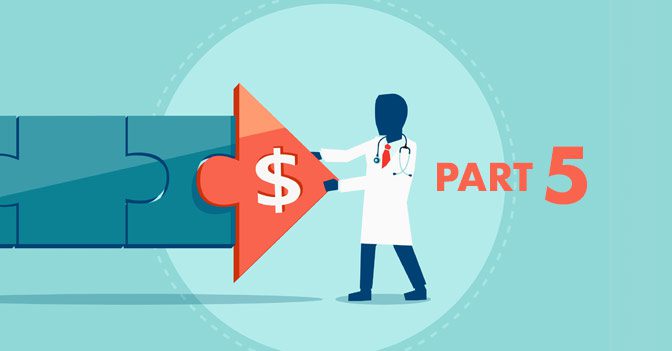This Insight is part of our Medicare Payment Primers series.
Medicare payment for laboratory services varies based on the setting. While laboratory services are bundled as part of an inpatient service (as well as rural health clinic visit and federally qualified health center encounter), most outpatient services are paid under the clinical laboratory fee schedule (CLFS). The methodology for setting CLFS rates has changed over the years; most recently, the Protecting Access to Medicare Act (PAMA) required the Centers for Medicare & Medicaid Services (CMS) to shift the basis from historical laboratory charges to private payer rates.
Under PAMA, laboratories must report their private payer payment rates over a six-month data collection period every three years to allow for the recalculation of the CLFS rates. CMS began paying for lab tests using the private payer-based rates in 2018, using 2016 data, but additional data collection periods have been delayed by Congress for future updates. Unless delayed again, the next collection period is scheduled for January-March 2026.
Only “applicable laboratories” are required to report their private payer rates to CMS. For the first data reporting period, CMS defined an applicable laboratory as one that:
- is certified under the Clinical Laboratory Improvement Amendments,
- bills Medicare under its own national provider identifier (NPI),
- meets the “majority of Medicare revenues” threshold, and
- exceeds the low-expenditure threshold.
To meet the majority of Medicare revenues threshold, a laboratory that receives more than 50% of its total Medicare payments from the CLFS and/or the Medicare Physician Fee Schedule meets the “majority of Medicare revenues” threshold. If a laboratory receives less than $12,500 in CLFS payments during the data reporting period, it is exempted from reporting requirements.
Applicable laboratories must report “applicable information” to CMS, including:
- the HCPCS code associated with each test the laboratory performed,
- the private-payer rate for each test for which final payment was made during the data collection period, and
- the associated private-payer volume for each test.
Private-payer rates include the final amount paid for laboratory tests after all discounts, rebates, coupons, and other price concessions are applied. Private-payer rates include payments from secondary payers and any patient cost sharing. Under PAMA, private payers are defined as a health insurance issuer, a group health plan, a Medicare Advantage plan, and a Medicaid managed care organization.
If no private-payer data is available, CMS sets the rate by looking at similar services and, if necessary, using information on charges and the resources used to perform the test.
CMS established the 2025 rates on private payer data from the first six months of 2016. Future annual rate reductions for individual laboratory services are capped at 15% through 2028. The CLFS rates are national and do not vary based on location.
Resource
Clinical Laboratory Fee Schedule https://www.cms.gov/medicare/payment/fee-schedules/clinical-laboratory-fee-schedule-clfs
This Insight is part of our Medicare Payment Primers series. If you have questions about regulatory requirements and compliance, our executives are happy to assist.

















